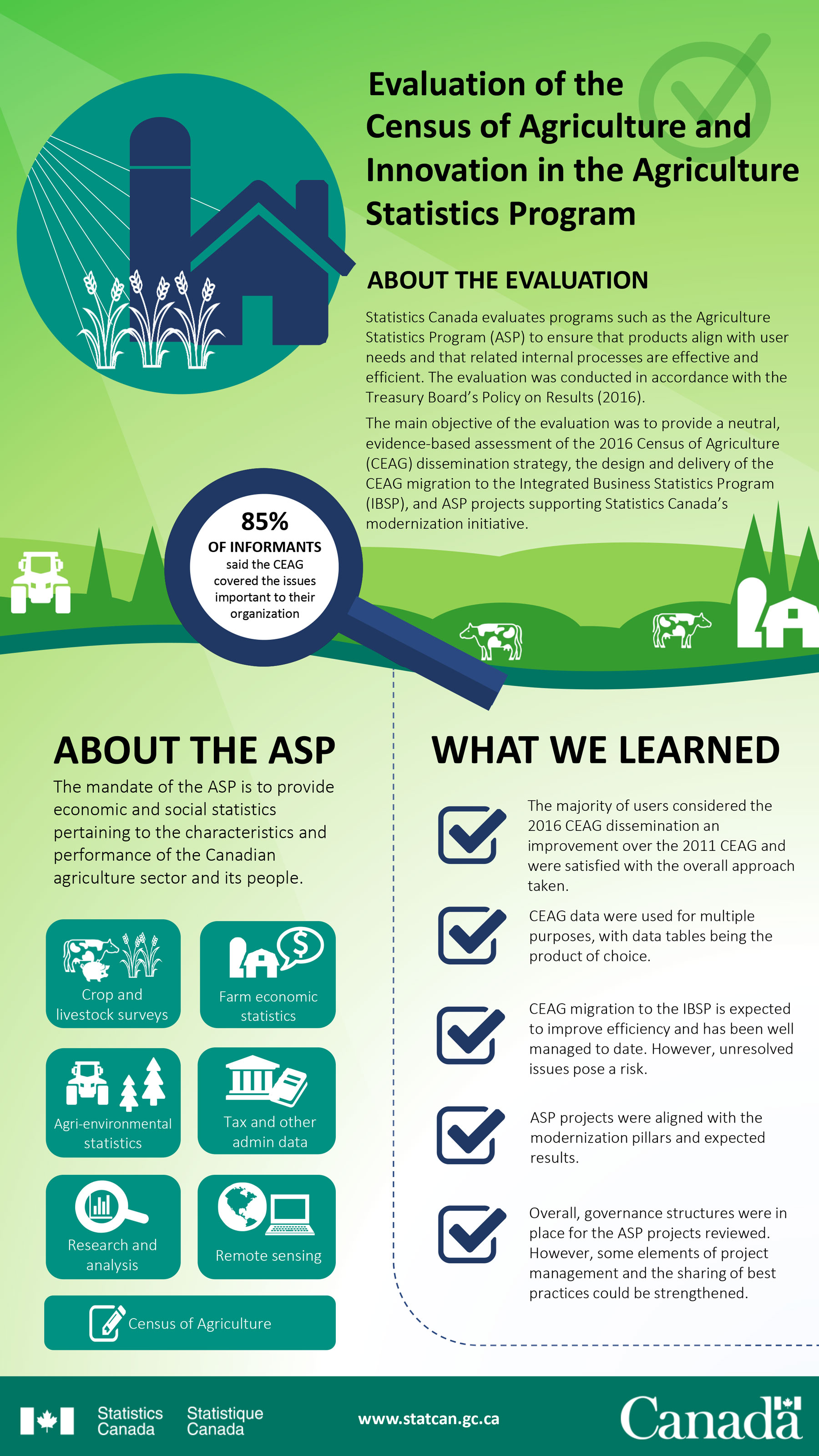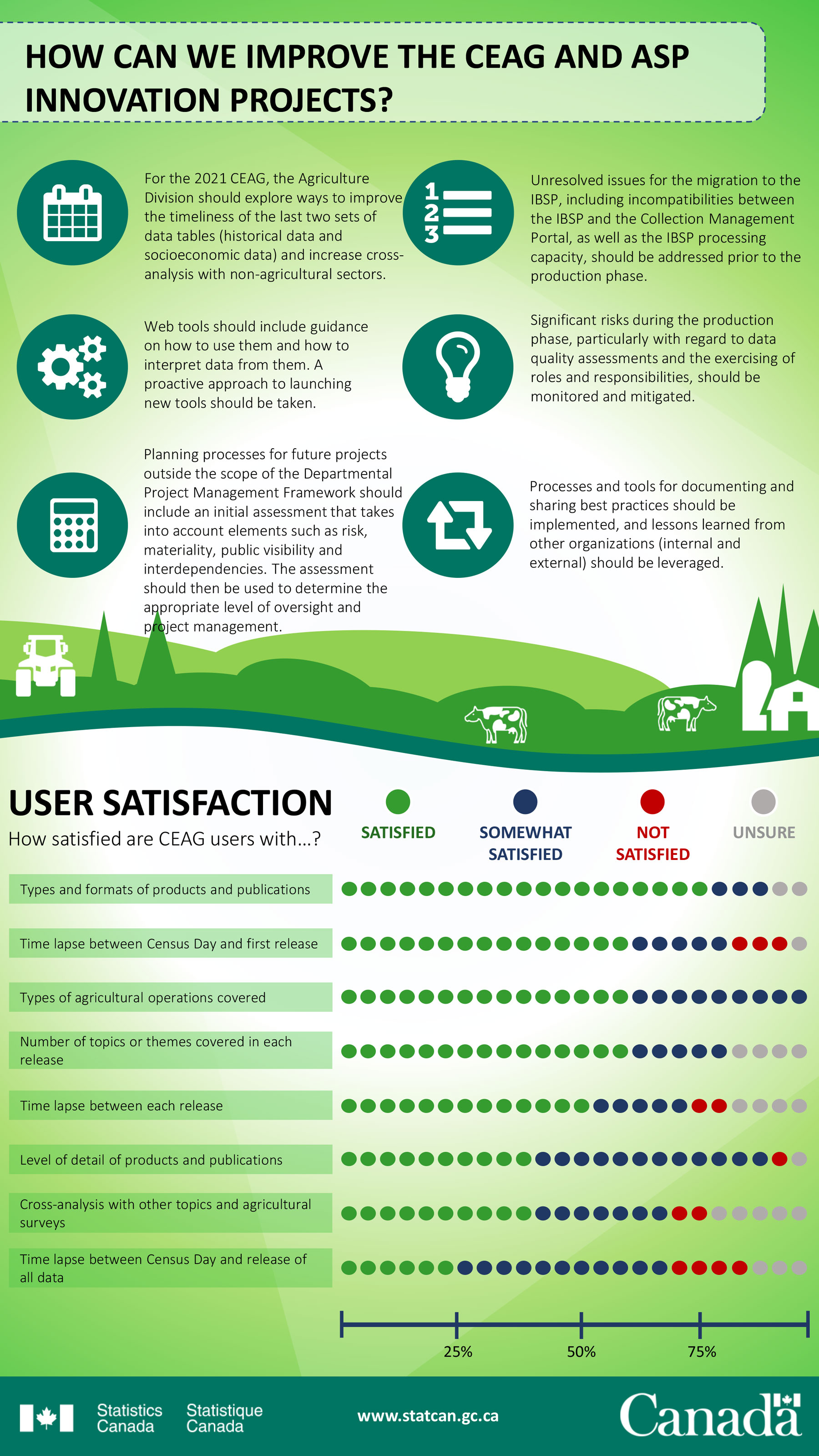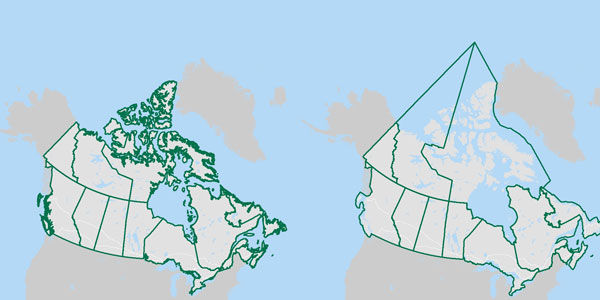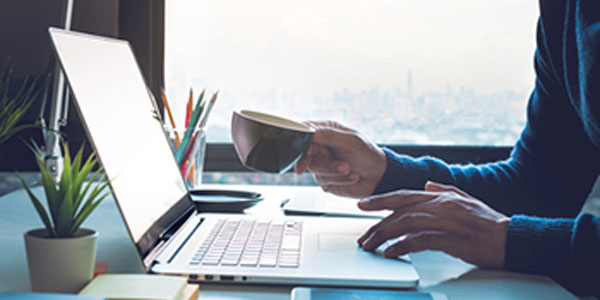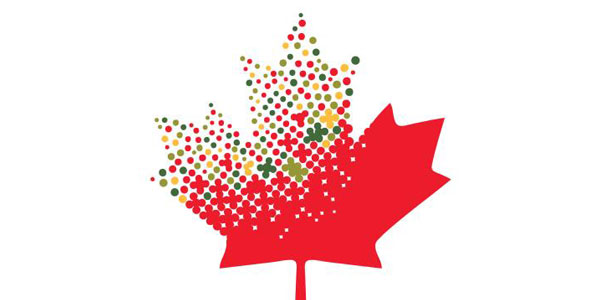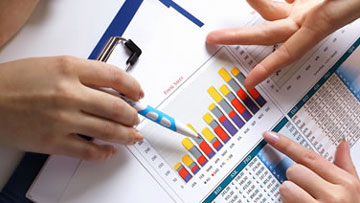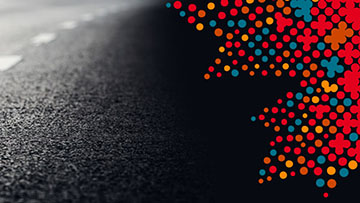Guidelines – Financial Information of Community Colleges and Vocational Schools (FINCOL)
For the fiscal year ending in 2020
I. Introduction
The main objective of this survey is to obtain detailed revenue and expenditure data on each college and vocational school in Canada. Coupled with what is already available for the university sector, this gathering of data will provide a complete picture of the financial statistics of postsecondary education as well as vocational training in Canada.
The following notes provide the principles, definitions and guidelines necessary for the completion of the data form. Since it is desirable to obtain figures as comparable as possible from one institution to another, each respondent is requested to:
- provide accompanying notes of explanation in the observations and comments section of the submission for figures that do not follow the guidelines;
- provide comments on items which are excluded from the data, such as cases where provinces are making contributions to repay debt on behalf of an institution or material gifts received as donated service along with their estimated market value;
- estimates should be made whenever possible if income and expenditure figures are not readily available in the required format from the financial records of the institution. When estimates are made they should be indicated with an asterisk (*).
II. Submission
The final deadline for the submission is indicated in the covering letter. The completed questionnaire(s) should be returned in the self-addressed envelope provided.
A copy of the institution's Audited Financial Statements is also requested with your submission. If a copy is not available, please advise Statistics Canada as to the date on which they will be forwarded.
III. Coverage
With the exception of private institutions that only offer courses at the trade and vocational level, the survey covers all private and public non-degree granting institutions that offer educational programs at the postsecondary level and/or at the trade and vocational level. For statistical purposes, institutions are classified as follows:
-
Colleges/Institutes/Polytechnics
Included in this classification are the colleges of applied arts and technology (CAAT's) in Ontario, general and vocational colleges (CEGEP's) in Quebec, institutes of technology and any other institutions providing education in fields such as paramedical technologies, nursing, agriculture, forestry, nautical sciences, etc.. These institutions offer programs at the postsecondary level, and may offer trade-vocational level programs.
-
Vocational Schools
This classification includes Community Colleges in Saskatchewan and Vocational Centres in Alberta, government training schools, vocational training centres and any other institution offering programs at the trade-vocational level only.
-
Training in hospitals
Included in this classification are educational centres located in hospitals, which offer educational or training programs, independently of the community college system, in nursing, radiotherapy, radiography, medical technology, etc..
To ensure full coverage, it is important that each reporting officer indicates on section 2 of the questionnaire the affiliated campuses included in and/or excluded from the submission.
IV. Confidentiality
Statistics Canada is prohibited by law from releasing any information it collects which could identify any person, business or organization, unless consent has been given by the respondent or as permitted by the Statistics Act.
V. Authorization to Release
In order for Statistics Canada to release the information provided an 'Authorization to release' form must be signed. The form provided authorizes Statistics Canada to release the information in aggregation to the provincial/territorial level only.
VI. Principles of Reporting
1. Accrual Concept
For the purpose of this survey, the revenue and expenditure data should be reported on an accrual basis. That is, all revenues and expenditures should be reflected in the period in which they are considered to have been earned and incurred respectively. For example, major adjustments, such as retroactive salary and their related benefit costs, should be reported on that basis.
2. Total Income and Expenditures
All income and expenditures of the institution are to be reported. In this regard particular attention should be paid to the following:
- when an institution is provincially governed or consists of a branch of a department, all costs related to the operation, maintenance and administration of the institution are to be reported; the actual funds used to finance those expenditures should be shown as a provincial source of funds;
- consultations may be required with the institution's research department to obtain detailed breakdowns of income sources and expenses related to sponsored research;
- capital expenditures, as well as related revenues, that are financed by a government Department or Ministry other than the one responsible for the institution must be included in this report; the reporting officer is responsible for obtaining and providing this information;
- the figures reported should not include income or expenditures for the purpose of creating or eliminating an appropriation; however, any actual income or expenditure transaction recorded directly in reserve accounts should be included in the figures reported; this also applies to other assets and liability accounts; provisions for replacement of assets are considered to be transfers to reserve or appropriation accounts and should not be reported as expenses;
- receipts and expenses relating to special purpose, trust and other funds of the institution should, as well, be included in the report.
3. Ancillary Enterprises
An ancillary enterprise is an entity that exists to furnish goods and services to students, staff or others, and that charges a fee directly related to, although not necessarily equal to, the cost of the goods or services. To reflect properly the full cost of these enterprises, you should report their total gross revenues and total gross expenditures in the appropriate cells in the Schedule 1 and Schedule 2A. In addition, a breakdown by type of ancillary enterprises (bookstores, food services, residences, parking) must be completed on the Supporting Schedule A.
4. Reporting of Income
When reporting the sources of funds in the operating, sponsored research and capital income in Schedule 1, it is important to show the revenues under the headings that correspond to the immediate source of funds for the institution. For example, if an institution offers training courses for which Employment and Social Development Canada (ESDC) purchases seats, then the amount of money paid by ESDC should be shown under "Federal" only if the money is received directly by the institution. If the money is received by a third party (provincial government) and then transferred to the institution, then the direct source of funds is the "Provincial Government".
VII. Definitions
1. Program Cost Groups
This section defines the program cost groups to be used in the reporting of direct instruction expenditures on Schedule 2B of the questionnaire.
The criteria used to define the various program cost groups originates from those used in other surveys conducted by Statistics Canada and also from analysis of different educational systems across Canada. Note that these statistical definitions may not correspond identically to other existing definitions used by other organizations or governments.
a) Postsecondary Programs
This program cost group includes all direct expenditures incurred in providing instruction to students enrolled FULL-TIME or PART-TIME in postsecondary programs offered by Colleges/Institutes (see section III). These programs are of two kinds: university transfer programs and semi-professional career programs.
i) University transfer programs
University transfer programs require secondary school completion to enter and provide a student with standing equivalent to the first or second year of a university degree program with which one can apply for admission to subsequent senior years at a degree granting institution.
ii) Career programs
These programs usually require high school graduation for admission and have a duration of at least one year. More commonly these programs last two, three or four years. Career programs lead to a certificate or a diploma in technology, business, applied arts, nursing, agriculture, etc., and they prepare a student to enter a career directly upon completion of the program, at a level between that of the university trained professional and the skilled tradesperson.
b) Trade and Vocational Programs
This program cost group includes all direct expenditures incurred in providing instruction (or training) to students (or trainees) enrolled FULL-TIME in vocational programs at the trade level for credit towards a recognized standing of proficiency or certification. Also included are direct expenditures related to students enrolled in academic upgrading programs for entry into a vocational program. Such students normally attend regular day classes in provincial trade schools, trade or industrial divisions of community colleges, adult vocational centres and other similar schools. These programs or courses prepare the student (trainee) for an occupational role below the professional or semi-professional level. A period of less than one year is normally sufficient to complete courses at this level. For less complex occupations, a program may last only a matter of weeks. Completion of grade 9 or 10 is usually required for entrance to these courses.
Included are, for example, pre-employment programs, language, skill or academic upgrading programs, refresher courses, apprenticeship programs, training on the job or training in-industry programs associated with educational institution, nursing assistant, etc..
c) Continuing Education Programs
This program cost group includes all direct expenditures incurred in providing instruction to students enrolled PART-TIME in courses, mostly in the evening, offered under the auspices of subsidiary divisions of schools designated by various names such as Division of Continuing Education, Adult Education Division and so on. Excluded are activities which have no sustained instruction or educational purpose such as recreational activities, presentations in the performing arts, art exhibitions and displays, debates fairs, conferences or conventions of clubs or associations.
Included are, for example, courses such as pre-employment programs, language, skill or academic upgrading programs, refresher, professional development, general interest, etc., which are offered on a PART-TIME basis.
2. Funds
a) Operating
This fund accounts for the cost of credit and non-credit instruction, non-sponsored research, academic support services, administration, plant maintenance and other operating expenses of the institution financed by fees, grants and other operating income. This fund will normally include all revenues and expenses regarding materials, supplies or services that are consumed within the year and which the institution considers to be operating, within the functional operating areas referred to in section 3 below.
b) Sponsored Research
Sponsored Research is a restricted fund that accounts for income and expenditures for all sponsored research as well as Research and Development (R&D). For an activity to qualify as R&D, there must be an appreciable element of novelty. Income is to be reported following the funds flow approach.
Sponsored Research covers the following activities:
Basic Research is any experimental or theoretical work undertaken primarily to acquire new knowledge of the underlying foundation of phenomena and observed facts, without any particular application or use in view;
Applied Research is the original investigation undertaken to acquire new knowledge, and directed primarily towards a specific practical objective;
Experimental Development is systematic work drawing on existing knowledge gained from research and/or practical experience that is directed to producing new materials, products or devices, installing new processes, systems and services, or improving those already installed.
The following activities should not be counted as R&D:
- all education and training of personnel; however, research by graduates and postgraduate students should be counted;
- scientific and technical information services such as collecting, coding, recording, classifying, analyzing, disseminating, translating, and evaluating, except where conducted solely or primarily for R&D support;
- routine testing of materials, components, products, processes, soils, etc.;
- maintenance of national standards;
- administrative and legal work connected with patents and licenses;
- investigations of proposed engineering projects using existing techniques; however feasibility studies on research projects are part of R&D;
- policy-related studies at the national, regional and local levels, as well as those of business enterprises in pursuit of economic activity;
- routine software development, computer maintenance, quality assurance, routine data collection, and market research;
- the many steps other than R&D necessary for the development and marketing of a manufactured product;
- the raising, management, and distribution of R&D funds; and
- routine investigation and normal application of specialized medical knowledge.
Sponsored Research accounts for the institution's income paid in the form of a contract (legally enforceable arrangements under which the institution, or an individual within the institution, agrees to undertake a research project, using the institution's facilities and/or personnel, for a sponsor that provide funds to meet all or part of the costs of the project) or a grant (unconditional payment for which service is not necessarily expected) from a source external to the institution.
Income sources include government, private industry and donors. Income may also include investment income, if the corresponding expenditures are reported in Sponsored Research.
Expenditures include activity funded from Sponsored Research income and exclude activity funded from the General Operating fund. It also includes the purchase of capital assets, if the corresponding income is reported as Sponsored Research.
c) Capital
The uniform reporting practice in the annual return for capital expenditures is to follow the funds flow approach, rather than to capitalize and amortize. Funds received to acquire capital assets are reported as income in the period in which the funds are received or receivable. Funds used to acquire capital assets are reported as expenditures in the year they take place.
For reporting purposes, capital expenditures are to be reported in the same fund as the corresponding income. Specifically, capital expenditures are only reported in the Capital fund when the corresponding income is reported in the Capital fund.
It is a restricted fund that accounts for resources provided to the institution for capital purposes and not reported in any other fund. Fund income includes grants and related investment income, donations and other resources made available to the institution by external funding sources, such as government and donors, specifically for capital purposes. Fund expenditures include building programs, acquisitions of major equipment and furniture, major renovations and alterations, space rental and buildings, land and land improvements.
Capital expenditures, as well as related revenues, being financed by a Government Department or Ministry other than the one responsible for the institution must be included in this report. The reporting officer should be responsible for obtaining and providing this information.
3. Functions (Schedule 2A)
a) Instruction and non-sponsored research
This includes all direct costs related to credit and non-credit courses, summer courses, extension programs and all other academic functions related to instruction and non-sponsored research such as offices of academic department heads, audio-visual services, laboratories, etc..
b) Library
This includes all the operating costs of the main library as well as the campus libraries, if there are any. All costs of library acquisitions from the Operating fund should be shown under this function.
c) General Administration
This includes costs for activities whose primary function is to provide administrative support for the operation of the institution. It includes the activities of the president's office, vice president, registrar, finance, personnel, public relations, secretariats, etc.. It also includes expenditures on convocations, ceremonies, legal and audit fees, long distance phone calls, the internal portion of debt repayments and costs for computing facilities.
d) Physical Plant
This includes the costs related to physical facilities, such as physical plant offices, maintenance of buildings and grounds, fire insurance, telephone service, security, repairs and furnishing, renovations and alterations, mail delivery service.
e) Student Services
This includes costs for activities whose primary purpose is to assist students in their educational or employment pursuits and which are outside of, but supplemental to, the instruction of academic programs. It includes the costs of: counselling, placement, health services, athletics (not physical education), student accommodation services (not residences), student transportation services, bursaries, scholarships and prizes, student financial aid office, cultural activities, etc..
4. Types of Income
a) Government Grants and Contracts
Lines 1 to 10 include grants from, and contracts with, federal government departments and agencies, provincial/territorial government departments and agencies, and municipal governments.
Government grants provide financial support to institutions and the grants may or may not be restricted.
Government contracts provide financial support to institutions under certain stipulations and conditions, including the provision of a deliverable product, such as a piece of equipment, a service or a report. A contract normally includes provisions for institutions to recover certain indirect or overhead costs, with the contract specifying or documenting the basis for the calculation of the recoverable costs.
Federal
Lines 1 to 6 include all research grants, research contracts, grants and contributions from the Government of Canada and its departments and agencies. Income received from the five major federal government agencies is reported on lines 1 to 5 as applicable.
The line items under "Federal" are as follows:
- Line 1: Employment and Social Development Canada (ESDC)
- Line 2: Canada Foundation for Innovation (CFI)
CFI income is reported under the Sponsored Research fund. - Line 3: Canadian Institutes of Health Research (CIHR)
- Line 4: Natural Sciences and Engineering Research Council of Canada (NSERC)
- Line 5: Social Sciences and Humanities Research Council
- Line 6: Other federal
Income from all other federal government departments and agencies is reported on this line.
Provincial/Territorial
Lines 7 to 9 include income from provincial government departments and agencies. For example, Provincial/Territorial CFI matching grants, Provincial/Territorial CFI matching income (line 8) from the Ministry responsible for the institution is reported under the Sponsored Research fund.
In the case of a provincially/territorially administered institution, direct provincial funding is to be included here.
Municipal
Examples of income to be reported on this line include grants from urban transit, communication and parking authorities.
b) Fees
This includes all mandatory student fees for credit and non-credit courses (with the exception of residence fees, parking fees and other similar fees which should be reported under 'ancillary enterprises - gross') paid by, or on behalf of all FULL-TIME and PART-TIME students.
All other fees charged to students such as laboratory fees, transcript, late registration, application, athletic fees, etc., are to be reported under the heading 'other'.
Normally, whenever revenues from fees are reported in Schedule 1 under specific program(s), related expenditures should be reported for the corresponding program(s) in Schedule 2B.
Note: Fees that are "flow through" (such as student activity fees collected for the students' council, etc.) should not be reported as college revenue.
c) Bequests, Donations, Non-Government Grants
This includes receipts from business, industry, foundations, individuals and religious organizations, as well as the value of services donated by various organizations.
d) Investment Income
This includes income from all investments such as dividends, bonds, mortgages, short-term notes and bank interest. Realized gains (or losses) should also be included if they are treated as income in the operating and/or capital funds.
e) Ancillary Enterprises (gross)
This includes total revenues from all ancillary enterprises such as residence or parking fees, and sales of services and products from bookstores, food services (dining hall, cafeterias and vending machines), publishing, laundry services, etc..
It should also be noted that the reporting officer is asked to report, on Supporting Schedule A, a breakdown of total income for the institution's ancillary enterprises.
f) Borrowings
This includes only those borrowings which are used to finance expenditures when repayment is to be made by the institution. Note that borrowings should be reported on an accrual basis.
g) Miscellaneous
This includes net income from rentals (other than ancillary enterprises), library fines and fines for other similar charges, and any income not reported elsewhere.
h) Interfund Transfers
When income from one fund is used to finance expenditures in another fund, report the amount as an interfund transfer. Total interfund transfers must net to zero.
5. Types of Expenditures
a) Salaries and Wages
Salaries and wages (excluding fringe benefits) as well as payments for leave of absence, shown under the appropriate functions and programs, are to be broken down into the following two categories:
i) Teachers
Included in this category are salaries and wages paid to full-time and part-time teaching staff.
ii) Other
This category includes all salaries not reported in part (i) above. Specifically, it includes salaries and wages paid to tutors, monitors, demonstrators, markers, laboratory technicians, maintenance personnel, office and technical staff, research and teaching assistants, etc..
b) Fringe Benefits
This includes the institution's contribution (in respect of all salaries and wages) to pensions, group life insurance, workmen's compensation, unemployment insurance, Canada pension, salary contribution insurance, long term disability insurance and other similar benefits. Also include staff development costs paid for by the institution.
c) Library Acquisitions
This includes all purchases of books, periodicals, audio/visual material and other reference material for the library. Costs of binding may also be included if normally considered part of the acquisition costs.
d) Operational Supplies and Expenses
This includes all expenditures for supplies which are normally consumed in the fiscal year, including postage, teaching supplies, photocopying, publications, long distance telephone charges, repair materials, all supplies to operate laboratories, etc..
e) Utilities
This includes all expenditures for fuel, electricity, water, gas, telephone equipment rental, etc..
f) Furniture and Equipment
This includes all expenses for furniture and equipment, such as laboratory equipment (other than consumables), administrative equipment and furnishings, copying and duplicating equipment, computing equipment maintenance equipment, etc.. Rental and maintenance costs as well as other related operating expenses should be shown under the appropriate operational function. Costs for replacing or acquiring new furniture and equipment should be reported under the capital fund.
g) Scholarships and Other Related Students Support
This includes all payments to students including scholarships, bursaries, prizes, fee remissions, gifts, etc..
h) Fees and Contracted Services
This includes all expenses for services contracted to external agencies (except for renovations, alterations and major repairs). Examples would be cleaning contracts, security services, snow removal, etc.. Also included are fees paid to legal counsellors (including retainers for negotiations of collective contracts), auditors' fees, consultant's fees, etc..
i) Debt Services
This includes all payments made to service debts of the institution such as bank interest, mortgage or debenture interest payments, and related charges. Principal payments on loans, mortgages, debentures or repayable grants should be excluded.
j) Buildings
This includes all capital expenditures which are normally considered part of construction costs, except for furniture and equipment as well as land and site services which are to be reported under their respective item. Costs for space rental, building insurances, taxes, minor renovations and alterations on buildings, and all other related operating expenses should be shown under the Physical Plant operational function. Depreciation is not to be included as an expenditure.
k) Land and Site Services
This includes capital expenditures on acquisitions of and improvements to land such as landscaping, sewers, tunnels, roads, etc.. Capitalized professional fees and planning costs related to this category are also to be included. Rental, maintenance and insurance costs as well as other related operating expenses for this item should be shown under the Physical Plant operational function.
l) Miscellaneous
This is to be used when the institution has an operating or capital expenditure not classified in the other categories.
m) Transfers To/From
This item is used for internal transfers of costs between funds or functions whenever it is not feasible to directly adjust the appropriate expenditure items.
The total internal transfers of costs should net to zero.
n) Ancillary Enterprises (gross)
Includes all gross expenditures incurred in the operating of ancillary enterprises (see section 4 (e) above).
It should be noted that the reporting officer is asked to report, on the Supporting Schedule A, a breakdown of total expenditures for the institution's ancillary enterprises.
VIII. Supporting Schedule A
Additional information is to be provided in this section for the total revenue and expenditures of institutional ancillary enterprises (bookstores, residences, food services and parking).
IX. Suggestions
Statistics Canada would welcome any suggestions made to improve this survey.
